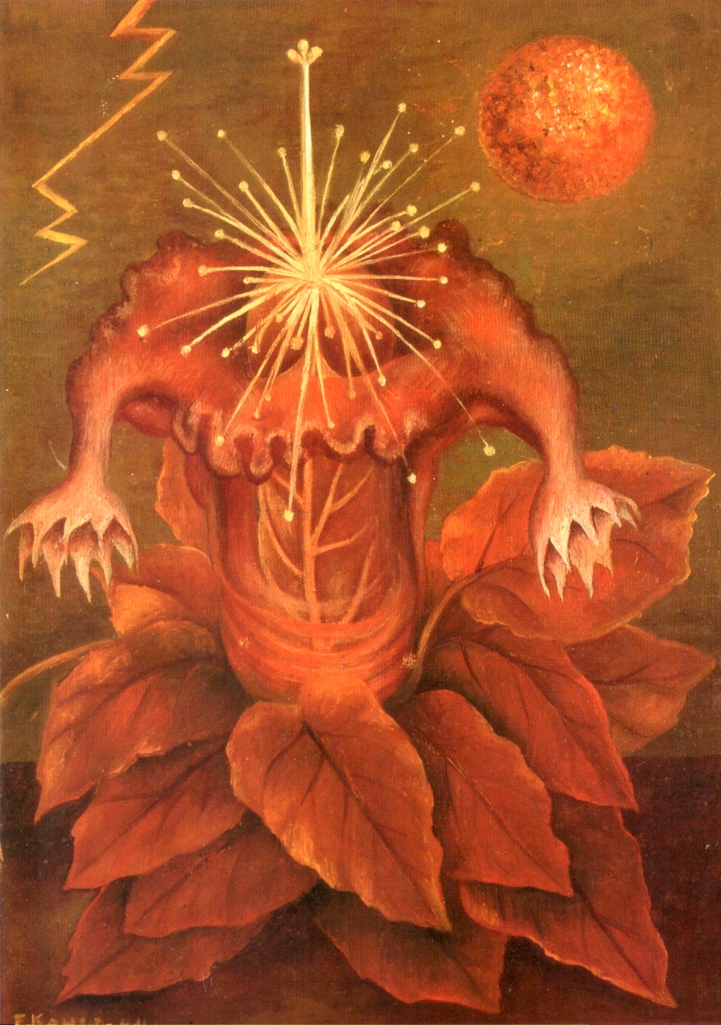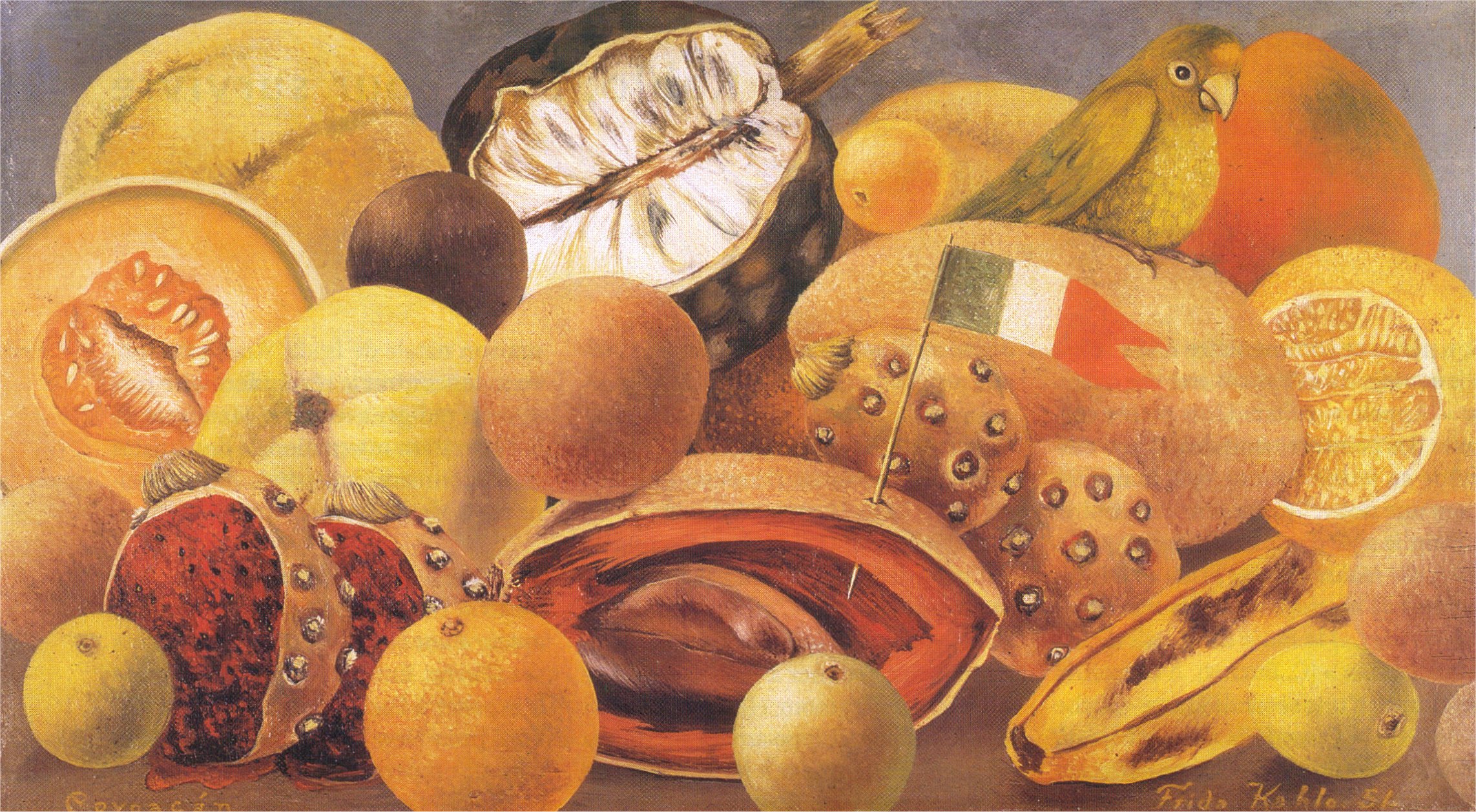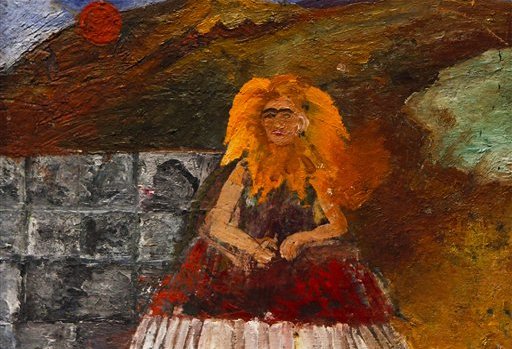The first solo presentation of artist Frida Kahlo’s work in New York City in more
than 10 years, FRIDA KAHLO: Art, Garden, Life, focuses on the artist’s engagement with
nature in her native country of Mexico, as seen in her garden and decoration of her home,
as well as her complex use of plant imagery in her painting. On view from May 16 through November 1, 2015, The New York Botanical Garden’s exhibition is the first to focus exclusively on Kahlo’s intense interest in the botanical world.
Guest curated by distinguished art historian and specialist in Mexican art, Adriana Zavala, Ph.D., the exhibition transforms many of The New York Botanical Garden’s spaces and gardens. It reimagines Kahlo’s studio and garden at the Casa Azul (Blue House) in the Enid A. Haupt Conservatory and includes a rare display of more than a dozen original paintings and drawings on view in the LuEsther T. Mertz Library’s Art Gallery.
Accompanying programs invite visitors to learn about Kahlo’s Mexico in new ways through poetry, lectures, Mexican-inspired shopping and dining experiences, and hands-on activities for kids. Bilingual texts in English and Spanish provide historical and cultural background, with photos of the garden as it appeared during Kahlo’s lifetime.
THE GARDEN AND STUDIO AT THE CASA AZUL: CONSERVATORY EXHIBITION
The landmark Enid A. Haupt Conservatory at The New York Botanical Garden comes alive with the colors and textures of Frida Kahlo’s Mexico. Visitors entering the exhibition view a reimagined version of Kahlo’s garden at the Casa Azul (Blue House), today the Museo Frida Kahlo, the artist’s lifelong home outside of Mexico City, which she transformed with traditional Mexican folk-
art objects, colonial-era art, religious ex-voto paintings, and native Mexican plants.
Passing through the indigo-blue walls with embellishments in sienna and green, visitors stroll along paths lined with flowers, showcasing a variety of important garden plants from Mexico. A scale version of the pyramid at the Casa Azul—originally created to display pre-Hispanic art collected by Kahlo’s husband, famed muralist Diego Rivera—showcases traditional terra-cotta pots filled with Mexican cacti and succulents.
A niche adjacent to the pyramid contains a desk and easel, reminding visitors that Kahlo’s work in her studio was intertwined with her life in her garden. Visitors to the Conservatory experience the Casa Azul as an expression of Kahlo’s deep connection to the natural world and to Mexico.
as well as her complex use of plant imagery in her painting. On view from May 16 through November 1, 2015, The New York Botanical Garden’s exhibition is the first to focus exclusively on Kahlo’s intense interest in the botanical world.
Guest curated by distinguished art historian and specialist in Mexican art, Adriana Zavala, Ph.D., the exhibition transforms many of The New York Botanical Garden’s spaces and gardens. It reimagines Kahlo’s studio and garden at the Casa Azul (Blue House) in the Enid A. Haupt Conservatory and includes a rare display of more than a dozen original paintings and drawings on view in the LuEsther T. Mertz Library’s Art Gallery.
Accompanying programs invite visitors to learn about Kahlo’s Mexico in new ways through poetry, lectures, Mexican-inspired shopping and dining experiences, and hands-on activities for kids. Bilingual texts in English and Spanish provide historical and cultural background, with photos of the garden as it appeared during Kahlo’s lifetime.
THE GARDEN AND STUDIO AT THE CASA AZUL: CONSERVATORY EXHIBITION
The landmark Enid A. Haupt Conservatory at The New York Botanical Garden comes alive with the colors and textures of Frida Kahlo’s Mexico. Visitors entering the exhibition view a reimagined version of Kahlo’s garden at the Casa Azul (Blue House), today the Museo Frida Kahlo, the artist’s lifelong home outside of Mexico City, which she transformed with traditional Mexican folk-
art objects, colonial-era art, religious ex-voto paintings, and native Mexican plants.
Passing through the indigo-blue walls with embellishments in sienna and green, visitors stroll along paths lined with flowers, showcasing a variety of important garden plants from Mexico. A scale version of the pyramid at the Casa Azul—originally created to display pre-Hispanic art collected by Kahlo’s husband, famed muralist Diego Rivera—showcases traditional terra-cotta pots filled with Mexican cacti and succulents.
A niche adjacent to the pyramid contains a desk and easel, reminding visitors that Kahlo’s work in her studio was intertwined with her life in her garden. Visitors to the Conservatory experience the Casa Azul as an expression of Kahlo’s deep connection to the natural world and to Mexico.
KAHLO’S WORKS ON VIEW: ART GALLERY EXHIBITION
The LuEsther T. Mertz Library’s Art Gallery at
the Garden exhibits 14 of Kahlo’s paintings
and works on paper—many borrowed from
private collections—highlighting the artist’s
use of botanical imagery in her work.
Focusing on her lesser-known yet equally
spectacular still lifes, as well as works that
engage nature in unusually symbolic ways, this grouping of artworks includes
Self-Portrait with Thorn Necklace and Hummingbird (1940);
Flower of Life (1944);
Still Life with Parrot and Flag (1951);
and Self-Portrait Inside a Sunflower (1954).
The Art Gallery exhibition, curated by Dr. Zavala, introduces visitors to the importance of plants and nature in Kahlo’s paintings and her life.
Also on view are large-scale photographs of Kahlo and the Casa Azul’s garden, which are complemented by photographs of Kahlo taken by photographers and friends such as Nickolas Muray.
From a review in The Guardian:
Self-Portrait with Thorn Necklace and Hummingbird (1940);
Flower of Life (1944);
Still Life with Parrot and Flag (1951);
and Self-Portrait Inside a Sunflower (1954).
The Art Gallery exhibition, curated by Dr. Zavala, introduces visitors to the importance of plants and nature in Kahlo’s paintings and her life.
Also on view are large-scale photographs of Kahlo and the Casa Azul’s garden, which are complemented by photographs of Kahlo taken by photographers and friends such as Nickolas Muray.
From a review in The Guardian:
Plant experts at the Botanical Garden have made some new historical discoveries in Kahlo’s art, noting an accurate rendering of a cotyledon, part of the embryo within a plant’s seed, in
The Dream, 1932.
Kahlo created this work when she was pregnant and living in Detroit, drawing herself asleep in bed with her long hair forming roots in the earth. “It’s a quite surrealistic drawing, and I’d never even noticed the cotyledon,” Zavala says. “It reaffirms our hypothesis – Kahlo worked carefully from source material, as well as from her imagination. She had countless books about plants in her collection and she collected various specimens. She even tucked miniature bouquets of flowers throughout the pages of a copy of Walt Whitman’s Leaves of Grass.”
One of the most important paintings in the show is
Kahlo’s 1931 portrait of botanist inventor Luther Burbank, who is credited with developing more than 800 varieties of plants. Kahlo paints him sprouting from the ground, a plant in his hand and his bottom half depicted as a tree. The painting can be read politically, Zavala says: “This work was at the top of my list, not only because of its subject matter but because Kahlo creates an extraordinary human/plant hybrid – it reflects her thinking and beliefs in 1931, a time when the mixing of species was anathema in places like Germany.”





